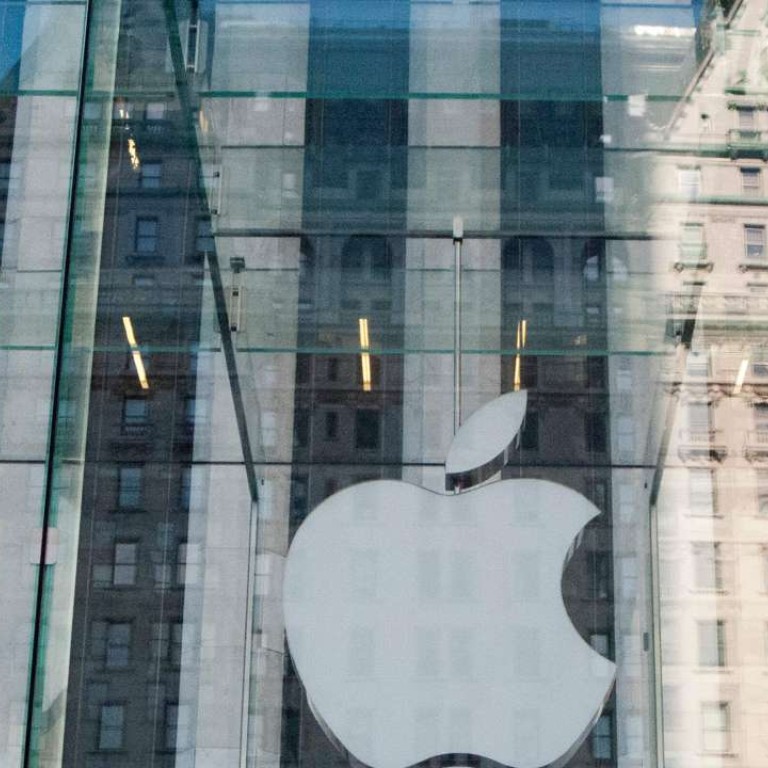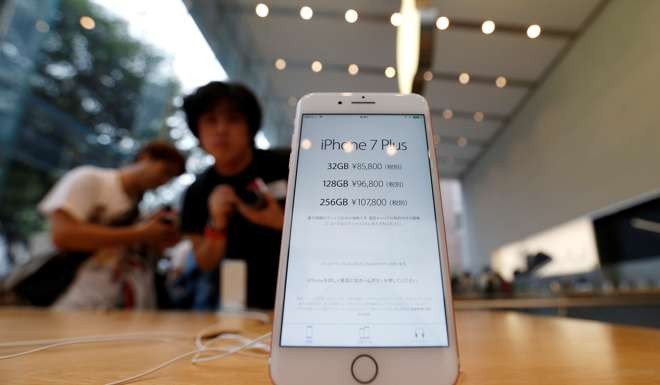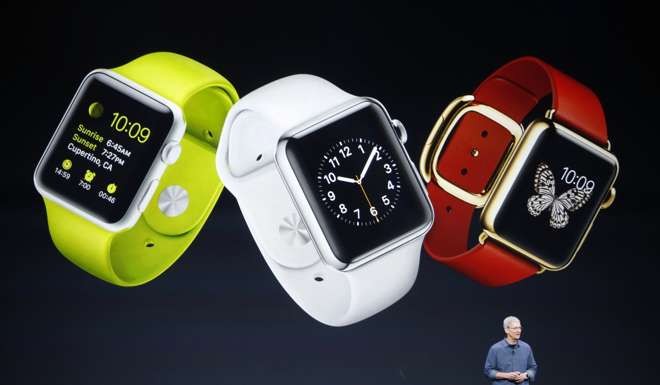
New | Apple iPhone sales fall as revenue from Greater China sinks almost 30 per cent
Higher revenue seen from year-end Christmas and New Year holiday season
Shares of the world’s most valuable publicly traded company fell 2.6 per cent to US$115.10 in after-hours trading.
Apple executives said demand for the new iPhone 7, the company’s best hope to revive flagging sales, was strong, despite fiscal fourth-quarter revenue dips in China and the Americas, its two most important markets.
Chief Financial Officer Luca Maestri said it was “impossible to know” if there was any effect yet from rival Samsung Electronics halting production of its fire-prone Galaxy Note 7 phones earlier this month.

Apple said it sold 45.51 million iPhones in the three months ended September 24, beating the average analysts’ estimate of 44.8 million, according to research firm FactSet StreetAccount.
Revenue fell 9 per cent to $46.85 billion, a touch behind Wall Street targets, according to Thomson Reuters I/B/E/S.
“Apple didn’t have a great (fourth quarter) as iPhones, Macs, China, the US and what appears to be Watch were down,” said Patrick Moorhead, an analyst at Moor Insights & Strategy.
Revenue from Greater China, once seen as Apple’s next growth engine, fell almost 30 per cent in the quarter, after dropping 33 per cent in the preceding period. Revenue from Greater China doubled in the year-earlier quarter.
Apple also forecast gross profit margins slightly behind Wall Street targets, projecting 38 to 38.5 per cent, versus expectation of closer to 39 per cent, said Mariann Montagne, senior investment analyst and portfolio manager at Gradient Investments.
“I think people were a bit surprised that they were so conservative there,” said Montagne, whose firm holds Apple shares.
The stock hit a 12-month low of $89.47 in May but has been on an uptrend since then as investor confidence returned.
Apple forecast revenue of between $76 billion and $78 billion for the current quarter. Analysts, on average, had expected $75.08 billion.
That meant annual revenue fell for the first time since 2001, highlighting the slowdown in the smartphone market as well as intensifying competition, particularly from Chinese rivals.
Apple is still optimistic about its business in China, CFO Maestri said in an interview with Reuters. While gross domestic product growth in the country has slowed, the economy is growing nonetheless, the middle class is expanding and smartphone ownership remains low, he said.
Maestri said high demand for Apple’s newest iPhones made the company confident about results in the first quarter.

The company’s net income fell to $9.01 billion, or $1.67 per share in the quarter from $11.12 billion, or $1.96 per share, a year earlier. That beat the average estimate of $1.66 per share.
Apple’s fortunes are strongly tied to the success of the iPhone, which accounts for two-thirds of its revenue.
Analysts, on average, expect the company to sell 75.8 million iPhones in the current quarter, according to FactSet.
Apple launched its iPhone 7 and iPhone 7 Plus models two weeks before the end of the quarter. Unusually, though, it did not release first-weekend sales figures, saying this data had become more of a reflection of supply than demand.
The fourth-quarter figures also include sales of the 6S and 6S Plus models as well as the smaller and cheaper iPhone SE.
Apple should have benefited from an extra week of sales in the latest quarter compared with last year.

